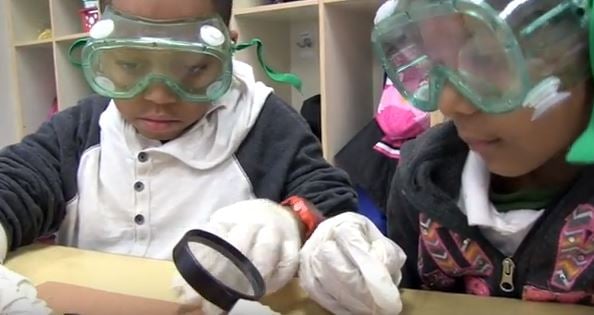When you look at Next Generation Science Standards, it’s easy to see that the curriculum you're developing needs to create a classroom environment where students have the opportunity to not only develop an understanding, but to demonstrate that understanding, because that's going to be the expectation of next generation assessments. And in order to help them develop that understanding, they must truly engage with the material as scientists and engineers.
When the scientific method or the engineering design process comes up, people sometimes think, "Oh, my goodness! That sounds like something from the Jurassic period. Science and engineering aren’t linear!" This is an important point. No one is saying that science and engineering are linear, that students must move from point A to point B directly in order to be learning the material effectively. What we are saying is that both science and engineering require structure if students are to engage with them effectively.

Students must understand the logical progression of science and engineering and apply them to various contexts, from different subjects (e.g. Earth Science, Life Science) and different crosscutting concepts or systems (e.g. patterns, energy & matter).
The importance of having a scientific process and an engineering design process, and teaching those processes to students, is that by doing so, students come to understand that there is a logical way to move from a problem or a question to a solution or an answer. They therefore begin to understand that logic is flexible, as well as to understand that science and engineering are iterative. That helps build a framework for expressing all of the practices as well as disciplinary core ideas and crosscutting concepts.
You can think of the processes as being a logical framework for solving problems and answering questions. That’s why it’s so important for students to encounter science and engineering practices at a young age, so they can internalize this framework. Once they begin to internalize this framework, students can interact with material in a less structured way, all while engaging with a variety of subjects and crosscutting concepts.
Consider erosion, which has implications for Earth and Space Science, Life Science and Physical Science. You could look at this topic through any one of these lenses to learn more about it. Then, you can explore it further with Engineering, Technology & Applications of Science, perhaps talking about ways of designing solutions that reduce erosion. This kind of interaction enables students to explore and experience material on multiple levels, which may even seem at face value to be unrelated, and to slowly discover the systemic nature and connection that underlies them.
This is what scientists and engineers do.
They explore the systemic nature of and connectedness of concepts, using scientific knowledge to develop better technology that solves problems (engineering) and using engineered technology to enable the further asking and answering of questions (science). While these still aren’t linear processes – in fact, they’re quite iterative and circular – they do follow a specific processes, which students are introduced to as they pose questions or problems and try to solve them by designing either experiments or technology.
Giving students these opportunities to use the practices, engage with the content and deeply explore the crosscutting concepts is crucial to an effective STEM environment. Therefore it becomes crucial for administrators and teachers to enable a system-level alignment to NGSS through the creation of robust, aligned curriculum.





